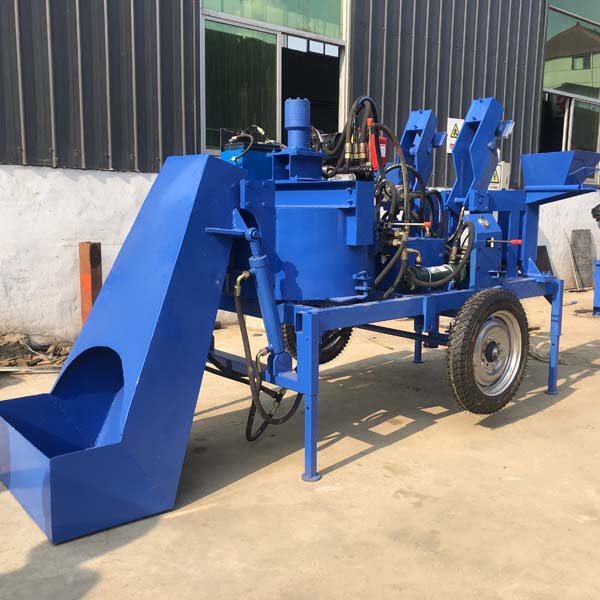
Image source Aiweibrickmachine
Title: Financing Options and Investment Strategies for Block Production Ventures
Introduction
Starting a block production venture is a promising business opportunity, given the consistent demand for concrete blocks in the construction industry. However, like any business, it requires substantial capital investment. To ensure a successful launch and sustainable growth, entrepreneurs need to explore various financing options and investment strategies. This article delves into the financing options available for block production ventures and discusses investment strategies to make the most of your resources.
Financing Options
1. **Self-Financing**:
Self-financing involves using your own savings or personal assets to fund the business. This option provides maximum control and eliminates the need to pay interest or give up equity. However, it does carry personal financial risk.
Pros:
– Full control over the business.
– No interest payments or equity dilution.
– Potential for personal tax benefits.
Cons:
– Risk to personal assets in case of business failure.
– Limited access to capital, which can hinder growth.
2. **Bank Loans**:
Traditional bank loans are a common source of financing for block production ventures. Entrepreneurs can secure loans with varying terms and interest rates, often based on their creditworthiness and collateral.
Pros:
– Access to a substantial amount of capital.
– Structured repayment plans with fixed interest rates.
– Potential for favorable terms with good credit and collateral.
Cons:
– Strict lending criteria, requiring a strong credit history.
– The need for collateral, which can be a personal or business asset.
– Interest payments can increase the overall cost of the loan.
3. **Small Business Administration (SBA) Loans**:
SBA loans are government-backed loans aimed at supporting small businesses. They offer competitive terms and lower down payments, making them accessible to entrepreneurs.
Pros:
– Government guarantee reduces risk for lenders, potentially easing approval.
– Lower down payment requirements compared to traditional bank loans.
– Competitive interest rates and flexible repayment terms.
Cons:
– SBA loan application processes can be time-consuming.
– Some restrictions on the use of funds.
– Approval still depends on creditworthiness and business plan.
4. **Investors and Equity Financing**:
Equity financing involves selling a portion of the business to investors in exchange for capital. This option is suitable for entrepreneurs who want to share ownership and potentially benefit from the expertise and connections of investors.
Pros:
– Access to capital without incurring debt.
– Potential for business guidance and mentorship from investors.
– Risk is shared with investors.
Cons:
– Dilution of ownership and control.
– The need to find and negotiate with investors.
– Accountability to investors for the business’s performance.
5. **Crowdfunding**:
Crowdfunding platforms, both rewards-based and equity-based, can be a source of financing for block production ventures. These platforms allow entrepreneurs to present their business ideas to a wider audience and raise funds from individual contributors.
Pros:
– Access to a broad network of potential investors.
– Lower entry barriers compared to traditional funding methods.
– Ability to test the market interest in your business concept.
Cons:
– The time and effort required to create and manage a crowdfunding campaign.
– The need to offer rewards or equity in exchange for contributions.
– No guarantee of reaching the funding goal.
Investment Strategies
1. **Diversify Revenue Streams**:
To mitigate risk and enhance profitability, consider diversifying your revenue streams. In addition to producing standard concrete blocks, explore opportunities for creating custom blocks, such as decorative or specialty blocks tailored to specific customer needs.
2. **Efficient Resource Management**:
Effective resource management is essential to maintain low production costs. Consider lean manufacturing practices to optimize your use of materials and labor. Efficient resource management will also help in reducing waste and improving sustainability.
3. **Quality Assurance and Innovation**:
Focus on quality control to ensure that your concrete blocks meet industry standards. Investing in research and development to improve block designs and manufacturing processes can set your business apart from competitors.
4. **Market Expansion and Niche Targeting**:
Explore opportunities for expanding your market reach by supplying blocks to neighboring regions. Identify niche markets where customized or specialized blocks are in demand, such as architectural firms or landscaping companies.
5. **Supply Chain Optimization**:
Streamlining your supply chain can lead to cost savings. Negotiate favorable agreements with suppliers for raw materials and explore options for bulk purchasing. Efficient logistics and distribution can reduce transportation costs.
6. **Invest in Marketing and Branding**:
Effective marketing and branding strategies can help build a strong presence in the market. Invest in digital marketing, trade shows, and advertising to promote your products. Create a unique brand identity to distinguish your block production venture.
7. **Customer Relationship Management (CRM)**:
Implement a CRM system to manage and nurture customer relationships. Building strong relationships with contractors, construction companies, and other clients can lead to repeat business and word-of-mouth referrals.
8. **Invest in Sustainability**:
As sustainability becomes more important in construction, consider investing in environmentally friendly production methods and materials. This can not only appeal to environmentally conscious customers but also potentially reduce operating costs.
9. **Regular Performance Evaluation**:
Continuously monitor the performance of your block production venture. Regularly review financial statements, sales figures, and customer feedback. Adjust your strategies based on insights from performance evaluations.
10. **Risk Management**:
Develop a comprehensive risk management strategy to prepare for unexpected challenges. This may include setting aside funds for contingencies, having a disaster recovery plan in place, and securing adequate insurance coverage.
Conclusion
Starting and running a block production venture involves careful consideration of financing options and investment strategies. The choice of financing depends on factors such as personal resources, risk tolerance, and the availability of capital. Investment strategies, on the other hand, require a keen focus on efficiency, quality, market expansion, and risk mitigation. By combining the right financing with sound investment strategies, entrepreneurs can build a successful and profitable business in the block production industry. With strong leadership and a commitment to excellence, a block production venture has the potential to thrive in the dynamic construction market.
